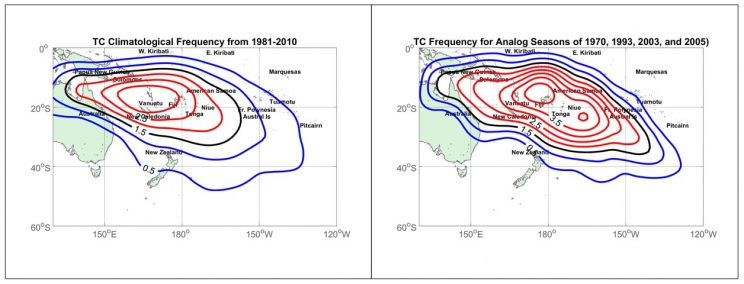ARL Weekly News – October 25, 2019
ASMD
Dr. Howard Diamond participated in a conference call with NOAA’s Pacific Regional Climate Services Director, the National Weather Service Pacific Region Headquarters, and the staff from the Weather Service Office (WSO) in Pago Pago, American Samoa to help with developing this season’s Tropical Cyclone (TC) Outlook for American Samoa. American Samoa is the only American territory in the southern hemisphere, and their TC season formally starts on November 1st and runs through April 30th. Dr. Diamond’s PhD studies involved developing a database and climatology for the southwest Pacific and using the analog season methodology that he developed for the region, his insights and charts provided positive input to what the Pago Pago WSO will issue in a couple of weeks. As a result of the analog seasons he found, coupled with the possibility for weak El Niño conditions (particularly in the central Pacific), the outlook is calling for a slightly elevated TC season in the Samoan Islands region of up to 2-3 TCs for the season. The staff at the WSO was grateful for the assistance and it is good to know that this information will be put to good use in this very remote area of the Pacific.
Dr. Howard Diamond represented ARL at a meeting on October 22nd in Silver Spring, MD that was an initial scoping meeting for a bilateral Line Office meeting between the Office of Oceanic and Atmospheric Research (OAR) and the National Environmental Satellite, Data, and Information Service (NESDIS) scheduled for January 30, 2020. The organizers had chosen three projects – one from each of OAR’s Climate, Oceans, and Weather portfolios to be presented in three lightning talks. Of those three, one project that ARL leads on the OAR side deals with improving volcano plume modeling by using ARL’s HYSPLIT model was chosen. Dr. Michael Pavolonis made the presentation which was put together collaboratively between Howard and Mike, with great inputs from Alice Crawford, Allison Ring, and Barbara Stunder from ARL/ASMD. The talk went well, and the rest of the meeting was dedicated to helping develop the day-long agenda for the January bilateral meeting. Howard was also able to bring the U.S. Climate Reference Network (USCRN) to the table which is another great example of OAR/NESDIS cooperation, and USCRN’s role with the National Integrated Drought Information System (NIDIS) via soil moisture monitoring caught the attention of the meeting organizers and that may also become part of the January bilateral.


